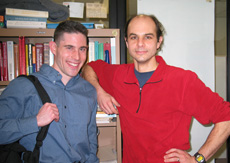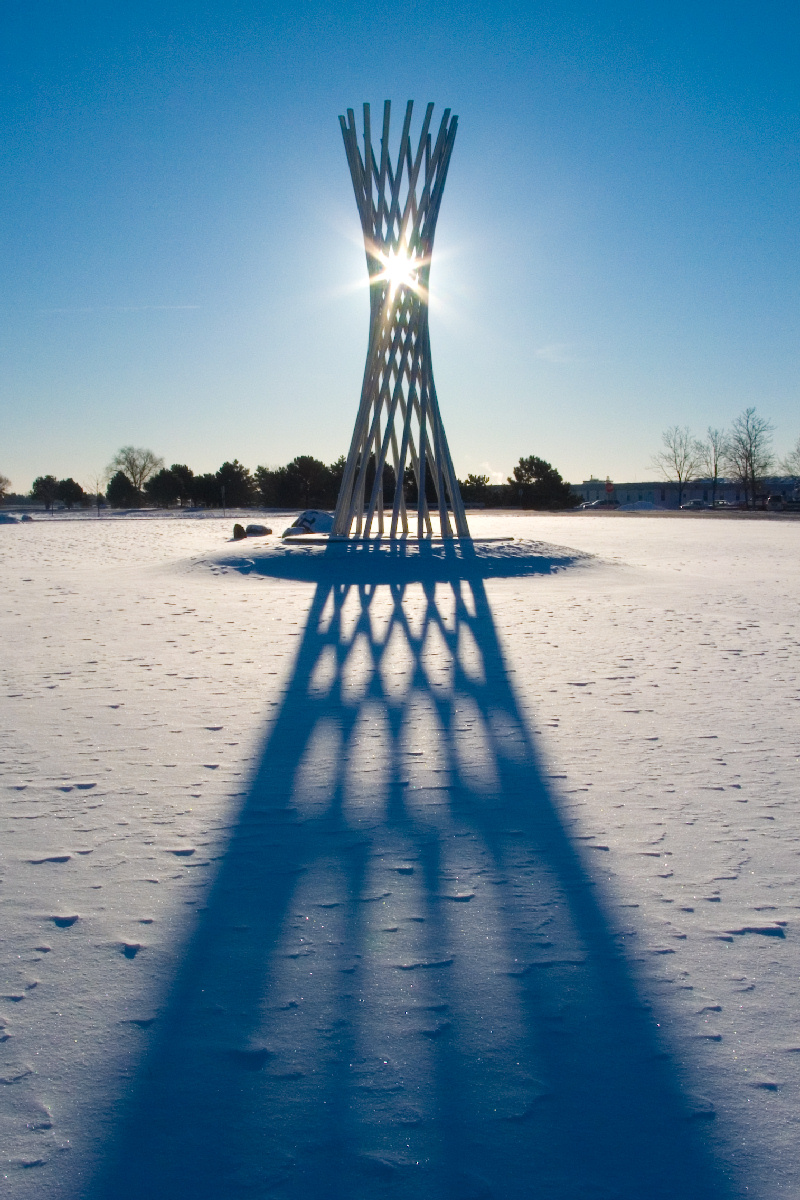|
Mon., February 12
1:30 p.m. Research Techniques Seminar - West Wing
Speaker: C. Jackson, SensL Technologies Ltd. WH10NW
Title: Low Light Sensing with Silicon Photomultipliers
2:30 p.m. Particle Astrophysics Seminar -
Curia II
Speaker: M. Kistler, Ohio State University
Title: High-Energy Neutrinos: Spawn of Cosmic Rays
3:00 p.m. SPECIAL DIRECTOR'S COFFEE BREAK -
Come and see the LHC@FNAL Remote Operations Center - Atrium East
4:00 p.m. All Experimenters' Meeting - Curia II
Special Topic: Multi-Batch Slip Stacking for NuMI
Tue., February 13
10:00 a.m. Accelerator Physics and Technology Seminar - (NOTE TIME)
1 West
Speaker: G. Arduini, CERN
Title: Performance of the LHC Injectors and Intensity Limitations
11:00 a.m. Academic Lecture Series - 1 West
Speaker: T. Becher, Fermilab
Title: Course 4, Part 1: QCD Effects in B Decays
3:30 p.m. Director's Coffee Break - 2nd floor crossover
4:00 p.m. Accelerator Physics and Technology Seminar -
1 West
Speaker: D. Kaplan, Illinois Institute of Technology
Title: Muon Cooling and Future Muon Facilities
Click here for NALCAL,
a weekly calendar with links to additional information. |
|
Wednesday, February 14
Lunch
-Spinach Fettuccine with Shrimp and Roasted Red Pepper
-Red Cabbage and Radish Salad
-Passionate Parfaits
Thursday, February 15
Dinner
BOOKED
Chez Leon Menu
Call x4598 to make your reservation. |
|
|
Bard will tell stories about physics, from finish to start

Experimentalist Bruce Knuteson and theorist Steve Mrenna are working out a new way to use data from particle collisions.
"Let's see, the King of Denmark is dead, Hamlet is dead ... but what
happened
in between? Just given the beginning and the end, it's boring, right? It doesn't make any sense." Fermilab theorist Steve Mrenna says this as he scribbles particle symbols on his whiteboard. "When it comes to particle collisions at the Tevatron, we already know the beginning and the ending. We want to tell a story about what happened in between."
Mrenna and his colleague, Bruce Knuteson, have been working on an algorithm, appropriately called "Bard," to do just that. They hope Bard will tell accurate stories about otherwise inexplicable events that show up in particle detectors. "It seems like the most obvious idea in the world," says Mrenna. "But it's not the way we've done things in the past."
Usually, particle physicists tell the story first. They use a theory to predict what will happen during collisions, and if the predicted particles show up in the data with the right masses and in the right quantities, the initial theory is likely to be correct. But according to Mrenna and Knuteson, this method makes it easy to ignore the unexpected. "People use the analogy of someone losing their keys and looking under a lamppost to find them," says Knuteson. "The area under the lamppost is typically small compared to the area of the street. What you really want to do is get a big light and look everywhere."
To explain the unexpected, Bard will work backwards. It will use traditional physics tools to tell stories about where surprising data came from. "One of the things we realized is it's actually pretty easy, using the language of Feynman diagrams, to just check off all the possible intermediate pieces of the story," says Knuteson. Of course, most of the scenarios will be wrong, but that's the beauty of an algorithm: It can construct far more scenarios than any human could. Bard will
also reveal related particles
that should appear in the data, and other cross-checks for each scenario. Adds Mrenna: "This is one way to diagnose if something surprising was just a detector effect, or if this is some real physics."
You can learn more about Bard here.
--Siri Steiner
|
|

Tractricious symmetry
TD's Tom Nicol sent this image to us late last week. "I couldn't resist the symmetry of this view of Tractricious outside the Industrial Center on this cold morning," he said. Nicol and other members of the Technical Division helped Fermilab founder Robert Wilson create this sculpture back in 1988. "Dr. Wilson was very involved, and once he got an idea in his mind about how something should look, he was determined to see it through. He wanted this sculpture to be exactly at the level of the road, which is why there's the mound under it. He also wanted the top of the tubes left open so it would sing in the wind, but we convinced him they'd fill up with water."
So where does the long, difficult-to-pronounce name come from? "Unfortunately, I don't know where the name came from. It sounds like some kind of pre-historic creature, but it's not," said Nicol.
|
|
|
Have we got a plan for you

"Just because something doesn't do what you planned it to do, doesn't mean it's useless."
--Thomas Alva Edison, American Inventor (1847 - 1931)
Each division and section has a plan that describes the actions they will take in the coming calendar year to strengthen their safety and environmental management system, and to improve the chances of meeting performance goals. This is ideally based on input collected from employees and supervisors, as well as division and section managers. These plans, and their results, are evaluated by the lab director and ultimately posted on the ES&H Section's web site. Click here to see the text for 2005-2007.
For 2007, divisions and sections have proposed 83 specific actions. This is more than double the number for each of the two previous years. Prominent features include increased use of newsletters and electronic communication, greater emphasis on recycling, and continued focus on inspections and solicitation of employee input. A number of proposed actions involve specific tasks, such as upgrading spill kits and deploying automatic defibrillators in high occupancy areas. A common feature of these plans is significant "hands-on" participation by managers and workers.
Take a look at the actions planned by your division or section. Do you have a key role? Are there things you can do to help out? You may also want to review the actions planned by other organizations. Have these other organizations proposed measures that could be applied to your situation? Can any be quickly implemented? If not, can they possibly be used in the 2008 plan for your division or section?
Safety Tip of the Week Archive
|
FYI: AIP Bulletin of Science and Policy News,
February 7, 2007:
Administration Seeks 7.2% Increase for DOE Office of Science
Honoring an "ambitious strategy" to double total federal funding within ten years for the DOE Office of Science, the National Science Foundation, and the National Institute of Standards and Technology core research program, the Administration has requested a 7.2 percent budget increase for the Office of Science in FY 2008. The $4,397.9 million request is $296.2 million over the Administration's request of last year, and $765.8 million over the FY 2006 level.
Read More
|
|
Take a look at LHC@FNAL
Fermilab employees and users are invited to take a look at the new LHC@FNAL Remote Operations Center during an "Open House" today from 3:00 to 4:00 p.m. The center is located in Wilson Hall, next to the cafeteria.
Fermilab Barnstormers meeting day change
Fermilab's model airplane club, the Barnstormers, will meet on Tuesday, February 13, in place of the monthly Wednesday meeting. Please plan accordingly.
Reduction in Your Long Term Disability Insurance Premium
If you've noticed an increase in your net income in your paycheck, it's because less money is being deducted for your Long Term Disability (LTD) insurance premium. Fermilab has renegotiated a lower insurance premium in the new contract with the insurance carrier. Each participant enrolled in the LTD insurance plan will recieve a memo with all of the details. If you would like to access the details immediately, please click here.
Upcoming Activities |
|